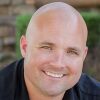Editor’s Note: Don’t miss the companion piece to this article, where we explored how to build a healthier sleep environment.
We all understand the critical importance of a good night’s sleep, especially after a long, stressful day. Yet, for many of us, simply lying down isn’t enough. Falling asleep and staying asleep can feel like an impossible challenge, no matter how exhausted we are.
I know this struggle firsthand. Like many of you, I began to experience serious health consequences from chronic sleep deprivation. Insomnia crept in, my weight ballooned by thirty pounds and my blood work revealed a cascade of imbalances. Years of inadequate sleep wreaked havoc on my hormones, triggered mental health issues and left my cognitive abilities in shambles, none of which are sustainable, especially for first responders or anyone in a high-stress profession.
That’s why I decided to take a systematic approach to reclaiming my sleep and my health.
| RELATED: Sleep prep checklist for first responders
We started by looking at how to set up the right sleep environment — adjusting temperature, blocking noise and light and reducing dust for cleaner air. From evening routines and nutrition tips to relaxation techniques and sleep hygiene, you’ll find practical ways to fall asleep faster and wake up refreshed.
Always consult your healthcare provider before trying any new medical device, supplement or sleep aid. Everything I share here was done under the supervision and guidance of a qualified medical professional.
Bloodwork
The first step in improving your health is to understand exactly what’s going on inside your body. Work with your doctor to identify any underlying issues through comprehensive blood testing that includes:
- Blood sugar (to assess for diabetes or prediabetes)
- A complete hormone and thyroid panel (to check for hormonal imbalances and thyroid function)
- A full cholesterol panel (to evaluate heart and metabolic health)
- Vitamin D levels (since deficiency is common and impacts many systems)
When I received my results, I discovered my hormone levels were out of balance, my thyroid markers were abnormal, my blood sugar had reached prediabetic levels and my vitamin D was so low it was nearly undetectable.
I immediately began supplementing with vitamin D, but quickly learned that not all supplements are created equal. Research shows that vitamin D3 (cholecalciferol) is more effective and longer-lasting than vitamin D2 (ergocalciferol), making D3 the preferred choice for raising and maintaining healthy vitamin D levels. For optimal absorption and bone health, choose a vitamin D3 supplement that also contains vitamin K. If your thyroid markers are even slightly off, consider a supplement that includes iodine, as this trace mineral is essential for thyroid hormone production.
In the video below, Mandy Nice, Lexipol strategic wellness director, and Lt. Jason Stevens with The Colony (Texas) Police Department share tips for optimizing sleep quality even if you can’t get the recommended quantity of hours slept.
Sleep test and CPAP machine
Once you’ve completed your blood work, the next crucial step is to get a sleep study, especially if you’re struggling with fatigue, poor concentration or other symptoms of disordered sleep. I resisted this for years, mainly because I dreaded the idea of wearing a CPAP mask. However, after finally undergoing a sleep study, my doctor diagnosed me with severe sleep apnea. The reality was eye-opening: even during the little sleep I managed, my body wasn’t getting the restorative rest it needed. My sleep quality was so poor that my body couldn’t distinguish between being awake and asleep.
Choosing to use a CPAP machine was the single most important decision I made to better my health. My previously fragmented four to five hours of sleep became solid and restorative. I regained my energy, my mood improved and I felt like my brain was actually working. For many people, consistent CPAP use can dramatically reduce the health risks associated with untreated sleep apnea, such as cardiovascular disease, cognitive decline and metabolic issues.
Keep your CPAP machine clean. Regular cleaning not only ensures safer use by reducing the risk of respiratory infections but also extends the lifespan of your equipment.
Curing insomnia
Once I improved my sleep quality, my next challenge was tackling insomnia without relying on prescription medications or over-the-counter sleep aids. I wanted to reset my body’s natural rhythms and restore restful sleep using proven, natural strategies. Here’s the approach I took, inspired by Tim Ferriss, author of “The 4-Hour Body,” and supported by scientific research and expert recommendations.
Step 1: Optimize magnesium intake
Magnesium is well-known for its role in promoting relaxation and supporting healthy sleep. I started by taking 200–400 mg of magnesium glycinate with dinner, which helped my muscles unwind and reduced physical tension. To further calm my mind, I added 200–400 mg of magnesium L-threonate about an hour before bed. This form of magnesium is thought to cross the blood-brain barrier more effectively, potentially enhancing cognitive relaxation. After about a week, I noticed a significant improvement in both how quickly I fell asleep and the quality of my rest.
Step 2: Use body temperature to trigger sleepiness
Chronic stress had left my nervous system on high alert, making it difficult to wind down at night. I learned that manipulating body temperature could be a powerful sleep cue. While Tim Ferriss experimented with both hot and cold baths, I found that taking a hot bath for 10 to 15 minutes before bed worked wonders for me. The key is to make the bath hot enough that you want to get out. Just make sure to always listen to your body and avoid overheating. If you feel sick or get dizzy, get out.
As your body cools down afterward, this natural drop in core temperature signals your brain that it’s time for sleep, making you feel drowsy and ready for bed.
Step 3: Bed of nails and night time routine for deep relaxation
After my bath, I used an acupressure mat, also known as “the bed of nails,” to further relax my body. Lying on the mat for 10 to 20 minutes as my body cooled helped release tension in my back and neck, and amplified the calming effects of the previous steps. By the time I finished this routine, I was desperate to get into bed.
| RELATED: Do you have a sleep disorder?
Follow-up blood work
Once my sleep quality improved, I noticed a remarkable shift in my overall health reflected in my follow-up blood work. Nearly all my blood markers showed significant improvement, from hormone balance to blood sugar and cholesterol levels. My goal was always to address underlying health issues naturally before turning to prescription medications. While I did eventually need some professional guidance to fine-tune my hormones and cholesterol, I felt empowered knowing I had laid the groundwork with lifestyle changes and had done everything possible before starting any medication.
Regular follow-up blood work is essential. It not only tracks your progress but also helps you and your healthcare provider make informed decisions about the next steps.
Exercise and fine-tuning
Improved sleep gave me the energy and motivation I needed to reintroduce regular exercise into my routine. Physical activity became a positive feedback loop: better sleep led to more energy, which led to more movement, which in turn further improved my sleep and overall health.
What I do now
Over the years, my nighttime routine has evolved into a more holistic, all-day approach to sleep hygiene. Here’s what I do now:
- Daytime preparation: I make small, intentional choices throughout the day, like getting morning sunlight, eliminating caffeine after noon and managing stress with short mindfulness breaks.
- Sauna sessions: I now use the sauna three times a week instead of nightly hot baths. Sauna therapy offers many of the same benefits, such as muscle relaxation and improved circulation, and can also support cardiovascular health.
- Hot baths for stressful days: If I’m feeling especially stressed, I still opt for a hot bath with a few drops of lavender essential oil for added relaxation, followed by time on the acupressure mat.
- Magnesium intake: Since my levels have normalized, I’ve reduced my magnesium supplementation, but I remain mindful of my intake through diet and occasional supplements.
- Mouth tape and nose strips: I’ve added mouth taping and nasal strips to encourage nasal breathing at night, which can improve oxygenation, reduce snoring and support deeper sleep. Always consult a healthcare provider before trying mouth tape, especially if you have breathing or sinus issues.
Your sleep routine should adapt as your needs change. Regularly check in with yourself, and don’t be afraid to tweak your habits as you learn what works best for your body and lifestyle.
Conclusion
Reclaiming your sleep is one of the most powerful investments you can make in your health and quality of life. My journey, from struggling with insomnia and chronic fatigue to restoring my energy, mood and physical well-being, shows just how transformative better sleep can be.
Remember, improving sleep isn’t about finding a single “magic bullet.” It’s about making small, consistent adjustments, listening to your body and working closely with your healthcare provider to track your progress.
Ultimately, quality sleep is the cornerstone of resilience, mental clarity and long-term health. For those of us in EMS and other high-stress professions, prioritizing sleep isn’t just about personal well-being, it’s essential for peak performance, sound decision-making and staying sharp on the job. By taking a holistic, proactive approach to sleep, you equip yourself to handle the unpredictable demands of the field, recover faster from stress, and protect both your physical and mental health. Investing in your sleep is investing in your ability to serve your community safely and effectively, no matter what challenges come your way.
Happy dreams!
| NEXT: Learn how to overhaul your bedroom for better rest

















































